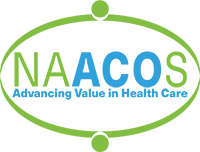|
May 6, 2020 Mr. Ajit Pai Re: (WC Docket. No. 20-89) COVID-19 Telehealth Program Dear Chairman Pai: The National Association of Accountable Care Organizations (NAACOS) appreciates the work of the Federal Communications Commission (FCC) to realize the potential of telehealth and other digital health technologies. Through its Rural Health Care Program, the FCC has provided funding to eligible health care providers to install telecommunications and broadband services necessary to deliver telehealth. This funding has helped rural hospitals establish programs such as those for tele-stroke, which connect small, rural providers with urban specialists to diagnose and treat early stages of stroke. NAACOS has been a strong supporter of telehealth. ACOs, first piloted under the George W. Bush Administration, are groups of physician practices, hospitals, and other providers incentivized to deliver more efficient, high-quality, low-cost care by being rewarded for hitting quality and spending targets. ACOs work to provide the right care, at the right time, to the right person, and telehealth is an important tool to make that a reality. With modern telecommunications, healthcare providers can visit with patients outside brick-and-mortar facilities, enabling access to care for those patients who cannot access a traditional office setting. Doctors and nurses can monitor patients’ chronic diseases or follow-up on hospital discharges through remote monitoring technologies. Our ACO members serve more than 12 million beneficiary lives through hundreds of organizations participating in population health-focused payment and delivery models in Medicare, Medicaid, and commercial insurance. The FCC’s April 2 Report and Order on the COVID-19 Telehealth Program (WC Docket No. 20-89), however, limits eligibility of the $200 million to the categories of healthcare providers defined in section 254(h)(7)(B) of the Communications Act of 1934.[1] This shuts out for-profit providers, including most practicing physicians who are on the front lines fighting COVID-19 and caring for patients. Therefore, we write in support of the American Hospital Association’s (AHA) April 9 Petition for Partial Reconsideration to expand the program’s eligibility, particularly to “other direct patient care facilities” regardless of ownership status.[2] Expanding this eligibility will be particularly meaningful to physician practices as well as other for-profit providers. FCC staff have confirmed that ACOs are eligible entities for the COVID-19 Telehealth Program if they apply as a consortium on behalf of other healthcare providers. However, each organization in a consortium must be eligible for the FCC program as a standalone entity. Because of the FCC’s limitation on for-profit applicants, an ACO with even one privately owned medical practice, a small primary care clinic or multi-specialty practice, for example, would be ineligible. Expanding eligibility would vastly increase the number of ACOs who can benefit from this program. Physician practices and hospitals both play important roles in ACO care and utilization of telehealth. Forty-three percent of the nearly 1,000 currently active ACOs are physician-led, exceeding the number of hospital-led (274) and jointly led ACOs (294).[3] There are more than 460,000 physicians and other clinicians who participate in Medicare Shared Savings Program ACOs in 2020.[4] While CMS has not released exact numbers, many work in independent medical practices, which are overwhelmingly for-profit and therefore ineligible for the $200 million in valuable funding this program provides. In fact, a 2018 American Medical Association survey found 45.9 percent of physicians in the United States owned their own practices.[5] These are often times small businesses that have limited cash on hand to support such things as the sudden purchase of equipment to facilitate telehealth and remote patient monitoring. During the COVID-19 pandemic, NAACOS has some members whose physician practices are now conducting as many as 90 percent of their patient visits through telehealth. Some are delivering as many telehealth visits in a single day as they did all last year. This dramatic shift is caused by the obvious need to protect the health of non-COVID patients, clinicians and office staff, and minimizing the community spread of the virus by promoting shelter-in-place orders. While this sudden shift to telehealth has occurred across the health system, NAACOS has heard concerns from ACOs ineligible for the COVID-19 Telehealth Program but who could benefit from the funding. The money could help implement the remote monitoring of COVID-19 patients and provide Internet connectivity to support two-way video for disadvantaged patients, for whom ACOs and their participating medical practices are still accountable. For the above reasons, we hope the FCC accepts the AHA’s Petition for Partial Reconsideration and will expand eligibility to for-profit healthcare providers, including private physician practices. These are valuable players in our health system working to fight COVID-19 and leverage telehealth for the betterment of community health. Yet they have been excluded from this valuable program, and we wish the FCC will reconsider its eligibility criteria to include them. If you have any questions, please contact David Pittman, Health Policy and Communications Advisor, at [email protected]. Sincerely,
Clif Gaus, Sc.D. [1] https://ecfsapi.fcc.gov/file/0402152235862/FCC-20-44A1.pdf [2]https://ecfsapi.fcc.gov/file/1040995021466/AHA%20Petition%20for%20Reconsideration%20(4.9.2020).pdf [3] https://www.healthaffairs.org/do/10.1377/hblog20191020.962600/full/ [4] https://www.cms.gov/files/document/2020-shared-savings-program-fast-facts.pdf [5] https://www.ama-assn.org/about/research/employed-physicians-now-exceed-those-who-own-their-practices |

